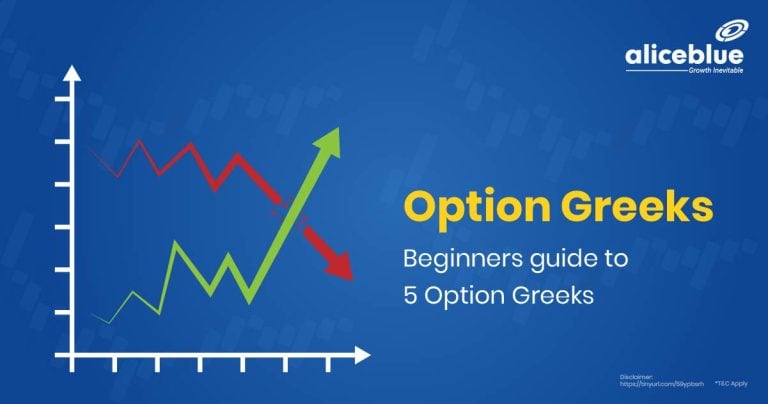Analysing option chain data involves studying open interest, volume, strike prices and premiums to identify market trends, gauge sentiment and pinpoint support and resistance levels. This enables traders to make informed decisions in options trading.
Content:
Option Chain Meaning
An option chain, also known as an options matrix, is a table displaying all available options contracts for a specific underlying asset. It includes details such as strike prices, expiration dates, premiums, open interest and volume, offering traders comprehensive data at a glance.
This tool helps traders analyze market sentiment, identify potential opportunities and assess risk-reward scenarios. By studying the option chain, traders can determine key support and resistance levels, evaluate implied volatility and make informed decisions for buying or selling options.

Option Chain Example
Imagine a stock trading at ₹500. Its option chain displays strike prices ranging from ₹480 to ₹520, with corresponding call and put options. For the ₹500 strike price, the call option premium is ₹20 and the put option premium is ₹15.
The open interest for the ₹500 call option is 5,000 contracts, indicating strong activity, while the put option has 3,000 contracts. This data suggests that traders expect the stock to stay near ₹500, making it a key support or resistance level.
How To Analyse Option Chain?
To effectively analyse an option chain, it’s essential to understand the key components in the options chart. These elements reveal market sentiment, trader interest and potential strategies:
- Options Type: Understand whether you’re dealing with Call Options (bullish) or Put Options (bearish).
- Strike Price: This is the agreed price for exercising the contract. Options become profitable when their value crosses the strike price.
- Open Interest (OI): Indicates the number of active contracts for a strike price. High OI suggests strong trader interest and liquidity.
- Change in OI: Tracks the daily change in OI, revealing whether contracts are being added or closed.
- Volume: Reflects the total contracts traded for a strike price, showing current market activity and trader interest.
- Implied Volatility (IV): Measures the expected price swings; high IV suggests volatile conditions, while low IV indicates stability.
- Last Traded Price (LTP): The most recent traded price of an option, which helps gauge its current market value.
- Net Change: Represents the change in LTP. A positive change shows increasing demand, while a negative change indicates declining interest.
- Bid and Ask Prices: These show the buy (bid) and sell (ask) quotes for an option. A rising bid price often reflects increasing demand.
- Bid and Ask Quantities: These represent the number of open buy or sell orders, helping assess demand and supply for a strike price.
- Option Moneyness:
- In-the-Money (ITM): Profitable options; e.g., call strike price below or put strike price above the current market price.
- At-the-Money (ATM): Strike price equals the current market price.
- Out-of-the-Money (OTM): Options not yet profitable; e.g., call strike price above or put strike price below market price.
Difference between Puts and Calls
The main difference between puts and calls lies in their purpose: calls are for bullish bets, while puts are for bearish bets.
| Aspect | Call Option | Put Option |
| Definition | Right to buy an asset at a specific price. | Right to sell an asset at a specific price. |
| Market Sentiment | Used when expecting the asset’s price to rise. | Used when expecting the asset’s price to fall. |
| Profitability | Profitable if the asset price exceeds the strike price. | Profitable if the asset price falls below the strike price. |
| Usage | Suitable for bullish or upward market trends. | Suitable for bearish or downward market trends. |
Uses of Option Chain
The main use of an option chain is to analyze market sentiment by examining call and put options for various strike prices. It helps traders identify trends, understand open interest and make informed decisions for hedging or speculative strategies.
- Market Sentiment Analysis: Option chains provide insights into bullish or bearish trends by analyzing the volume and open interest of call and put options, allowing traders to gauge market participants’ expectations.
- Strike Price Selection: By reviewing the premium of various strike prices, traders can choose the most suitable strike for their risk-reward preference, optimizing entry and exit points.
- Volatility Assessment: Implied volatility in option chains aids in predicting price fluctuations, helping traders determine the fair value of options and decide on strategies during high or low volatility periods.
- Hedging Strategies: Option chains are essential for creating hedging strategies, allowing investors to protect their portfolios from adverse price movements through options like straddles or spreads.
How To Analyse Option Chain Data? – Quick Summary
- An option chain is a list of all available options for a specific asset, showing strike prices, expiration dates and market data for both call and put options, used for market analysis in Indian currency (INR).
- For a stock priced at ₹500, the option chain shows multiple strike prices like ₹480, ₹500 and ₹520, with respective call and put options, volumes and open interest for each strike.
- Analyze option chains by observing open interest, volume, implied volatility and the relationship between calls and puts. Pay attention to strike prices with significant OI and volume to gauge market sentiment in INR.
- Call options give the right to buy an asset at a specific price, while put options provide the right to sell. Calls benefit from rising prices, while puts gain from falling prices, all priced in INR.
- Option chains are used to assess market sentiment, determine potential support or resistance levels, identify price trends and help in strategy selection, including speculation, hedging, or risk management, with values in INR.

How To Analyse Option Chain? – FAQs
Analyze an option chain by focusing on open interest, volume, implied volatility and the relationship between call and put options. Look for significant price levels, large open interest and trends to gauge market sentiment and potential price movements.
An option chain is a listing of all available options for a specific security, showing details like strike prices, expiration dates and trading volumes for call and put options. It helps traders make informed decisions based on market activity.
Avoid ignoring open interest, relying only on volume, neglecting implied volatility and overlooking the overall market trend. Don’t base decisions solely on short-term data; always consider the bigger picture to avoid misinterpreting option chain signals.
Strike prices represent the price at which options can be exercised. When analyzing an option chain, focus on the strike price of the current stock price. Large volumes or open interest near key strike prices indicate important market levels.
Open interest refers to the total number of outstanding option contracts that haven’t been exercised or closed. It helps identify market sentiment and liquidity. A rising OI indicates increasing interest, while a falling OI suggests weakening market participation.
Analyze the option chain’s open interest, volume and price trends to gauge market sentiment. Rising call options with increasing open interest can signal bullish trends, while more put options may indicate bearish sentiments, helping predict future market movements.
To read open interest (OI), observe the number of contracts at each strike price. High OI at specific levels can indicate key support or resistance levels. Increasing OI with rising prices suggests a strong trend while decreasing OI signals weakening momentum.
Call options represent the right to buy the underlying asset at a specific strike price, while put options represent the right to sell. Analyzing both helps determine market sentiment, with calls indicating bullish and putting signalling bearish expectations.
Disclaimer: The above article is written for educational purposes and the companies’ data mentioned in the article may change with respect to time. The securities quoted are exemplary and are not recommendatory.









